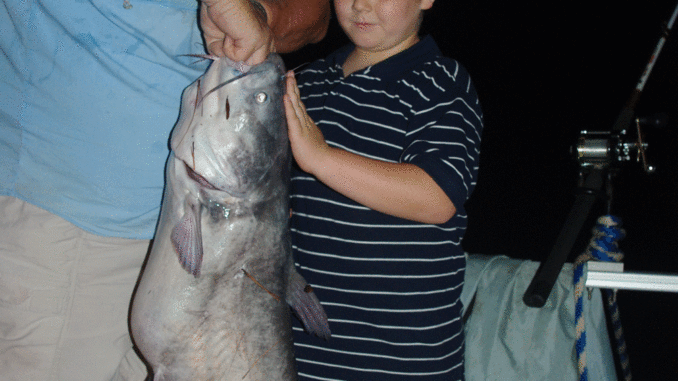
Santee Cooper’s No. 1 catfish use ‘highways’ to travel, and when they get on the road, it’s no short sprint. Here’s now to track them down.
It had been a slow winter for fishermen targeting catfish on the Santee Cooper lakes. Unseasonably warm water and very little rain upset the normal movements of the blue and channel cats, and made them especially tough to find.
Guide Darryl Smith sipped a tall glass of ice tea in the restaurant at Canal Lakes Fish Camp on the Diversion Canal as he thought about a trip planned for that evening.
“This heat has really thrown them off their pattern,” Smith said. “We’ll find them, though.”
Smith, a husky, soft-spoken Rock Hill native who guides and targets big catfish on the Santee Cooper lakes, has a leg up on his whiskered targets because he understand when and why they move around, and he’s got a “road map” of the “highway” system they use.
“I’ve said it my whole life,” Smith said. “Fish use creeks, ditches (and) riverbeds to move through a lake the way we use hallways to move through a building. So use your electronics to find those ditches and riverbeds that feed those flats.”
For instance, Smith explained, catfish can sense temperature changes and move as a change in weather approaches.
“When it’s cold, the fish are really active in deep water underneath the bait balls,” he said. “But when the headwaters in the river start heating up and (the water) starts moving downstream, a catfish can feel a 1/2-degree of change in water temperature the way we feel 15 degrees in the air.
“That warm water starts trickling down the lake and, as soon as it hits the nose of these fish, the bait starts heading upstream into the rivers and swamps preparing for their spawn, and the blues go right with them.”
To help him keep up with the big cats, Smith spends a lot of time with S.C. Department of Natural Resources fisheries biologists. One of his hang-out buddies is Scott Lamprecht, the regional fisheries biologist at the Dennis Wildlife Center in Bonneau. Lamprecht is a veteran of 26 years working Lake Moultry and Lake Marion.
According to Lamprecht, monitoring a blue cat is a lot more challenging than tracking most other fish.
“We want to do a telemetry study with the blue catfish, but they don’t retain their tags very well,” Lamprecht said. “We just finished a study of tag retention among blue cats here, and about two thirds of them were thrown in about 280 days.”
By “thrown,” he meant that they reject the stomach tag by sending out a loop of intestine to enclose the transmitter and actually absorb it into the intestinal tract and expel it.
“So our alternative,” Lamprecht said, “is to take these $300 tags and put 60 of them in and only get data from 20, and that’s really cost prohibitive.”
Tags are not, Smith has to find fish to keep his parties happy. He did just that later that evening, loading the cooler on his pontoon boat with more than 100 pounds of blues, channels, flatheads and white catfish. The load was anchored by a 32-pound blue.
Smith’s fishing methods were simple: Drift with cut herring on 25-pound line or anchor in as little as 4 feet of water and cast out cut baitfish on 40-pound line — you need the latter for the stumps these fish will inevitably wrap around.
As Memorial Day weekend and summer approaches, Smith will be following catfish on their migration back downstream, through Lake Marion and the Diversion Canal and into Lake Moultrie.
But he won’t be following them into deep water.
“I’ll be fishing shallow at night,” he said. “What happens in June, July and August is that the lake water gets hot, and you have an algae and pollen and plankton bloom. I’ll fish 1 to 5 feet deep under that algae at night.
“What the biologists explained to me was that the sun can’t penetrate that algae and pollen and plankton bloom in deep water, so there’s no photosynthesis going on. But the sun can penetrate to the bottom in shallow water and get to that moss, and you get some photosynthesis, so that shallow water actually has more oxygen than the deeper water.
“A blue catfish and a largemouth bass are really a lot alike. They’ll move off in daylight to the first (contour break) in 10 to 25 feet of water, and when it gets dark, they’re going back up there in 1 or 2 or 3 feet and feed on those freshwater clams that are dying because the water’s getting hot, and all the little bream and white perch that are up there shallow.”
Smith said industry insiders have told him that interest in catfish is the fastest-growing of any species, rivaling largemouth bass. He thinks a main reason is that it’s simple and affordable; it doesn’t require high-tech electronics, expensive boats and gear, and giant tackle boxes brimming with myriad soft plastics, spinners, crankbaits and other lures that may or may not work on a given day.
“You can take a basic johnboat, a canoe or fish off the banks using basic fishing gear and live bait, and you can be successful,” Smith says. “That’s what a lot of people like about it. Fun fishing without all the work.”
DESTINATION INFORMATION
WHEN TO GO/HOT TO GET THERE: The Santee Cooper lakes — Lake Marion and Lake Moultrie — are easily accessed from most areas of South Carolina and beyond via one of the major interstates: I-95 (which crosses Lake Marion) and I-26 (which runs roughly parallel to the lakes to the south). Catfish will be heading into their summer patterns this month, feeding in the shallows at night. The biggest concentrations will be moving downstream through the system, returning from their spring spawn and moving back down Lake Marion and into Lake Moultrie. Shallow water around islands on the lower end of Lake Marion are great summer spots.
TACKLE/TECHNIQUES: Fish shallow areas at night with cut bait on Carolina rigs. It takes some stout line to pull big fish out of shallow cover, so don’t go with light tackle.
GUIDES/FISHING INFO: Capt. Darryl Smith, Capt. Darryl’s Guide Service, 803-372-1398 or www.captaindarryls.com; Capt. Allen Spence, Spence’s Guide Service, 803-478-5029; Canal Lakes Fish Camp, Cross, 803-753-2271 or www.canallakesfishcamp.com. See also GUIDES & CHARTERS in Classifieds.
ACCOMMODATIONS: Canal Lakes Fish Camp, Cross, 803-753-271 or www.canallakesfishcamp.com; Santee Cooper Country, 803-854-2131 or www.santeecoopercountry.com.
MAPS: Kingfisher Maps, Clemson, 800-326-0257 or www.kfmaps.com; Fishing Hot Spots, 800-ALL MAPS or www.fishinghotspots.com.

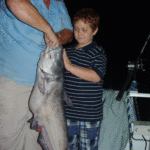
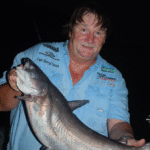
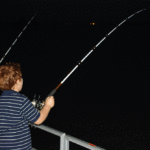
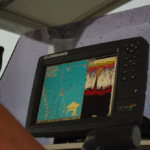

Be the first to comment